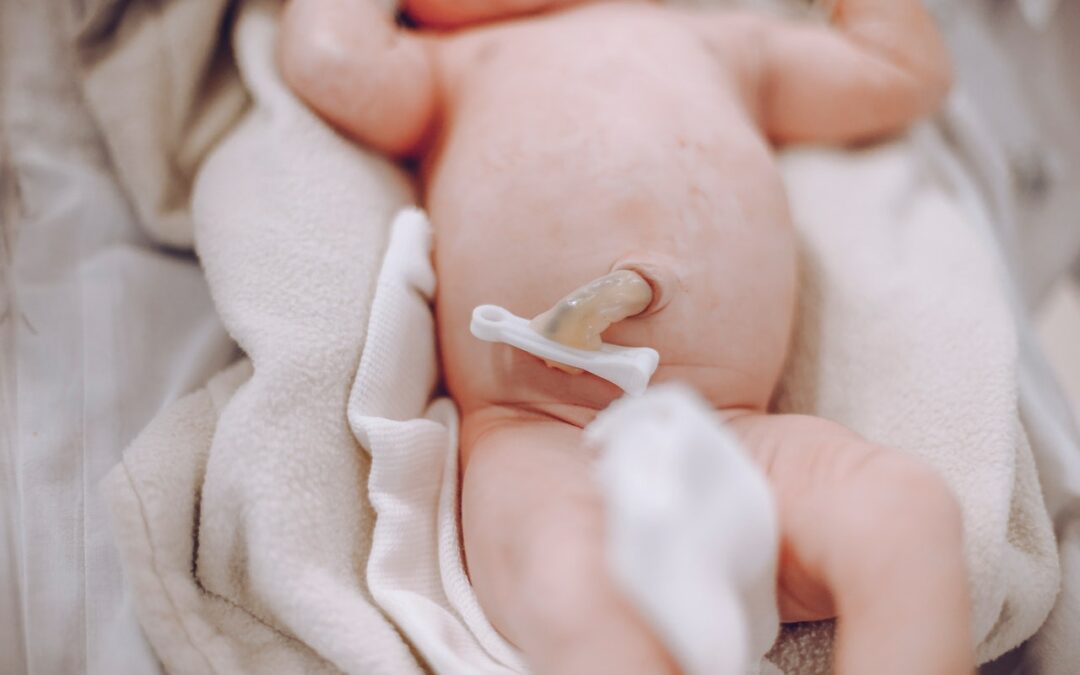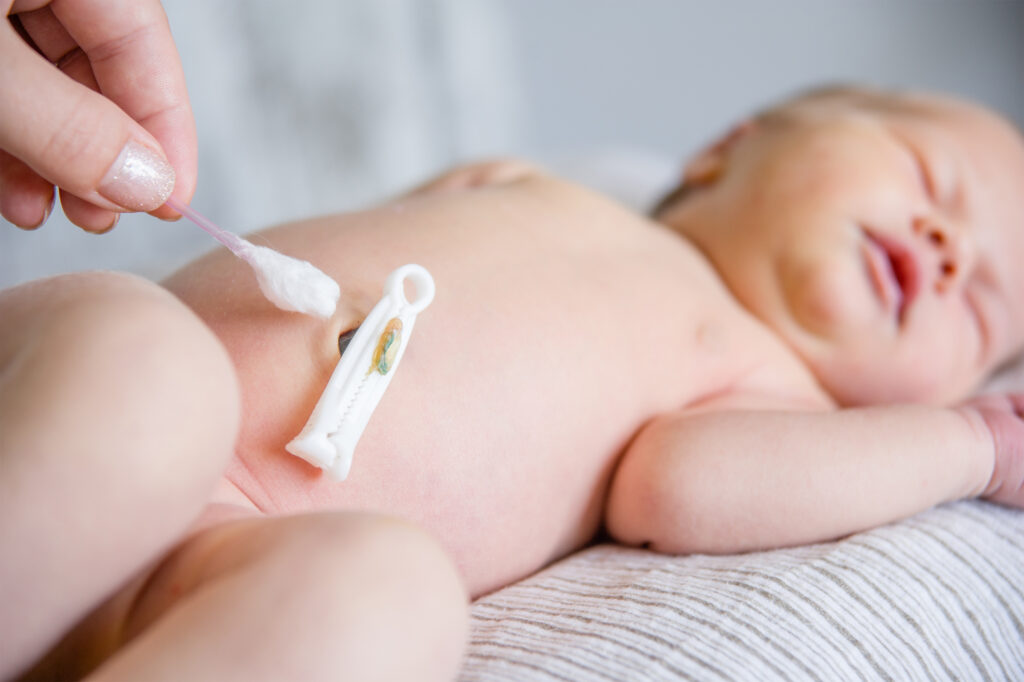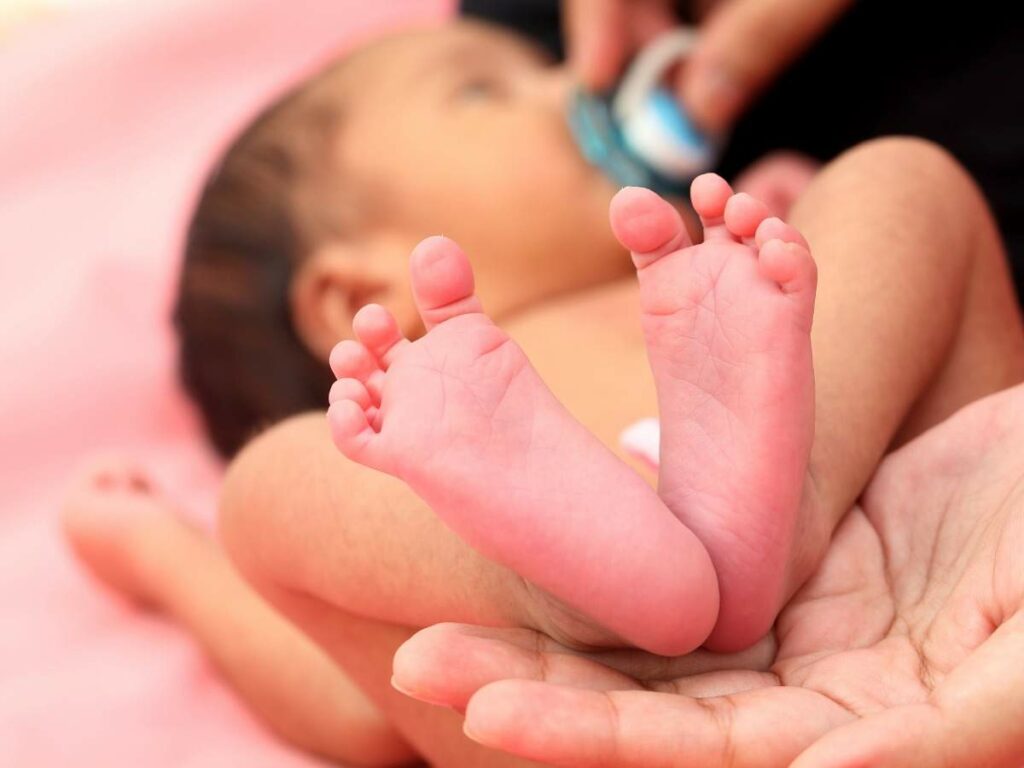Quick Answer: What is an umbilical cord?
The umbilical cord is the reason why you have a belly button. Once the baby is born, the umbilical cord is cut off, and it is referred to as an umbilical cord stump.
In case you might be asking yourself why umbilical cord care is essential:
A belly button is formed when the umbilical cord stump dries and withers off. This can occur in a time frame of five to fifteen days (two weeks) and is a painless process. In simple words, the umbilical cord stump is the transition phase of the in-utero umbilical cord to a belly button.
This transitory phase is sensitive and requires complete attention from the parents. If not taken care of, severe infections can occur, posing a grave threat to your baby’s health.
In this blog post, we will help you learn how to take care of your baby’s umbilical cord stump, the dos and don’ts, and some relevant information about the umbilical cord.
Umbilical Cord — An Overview:
Before discussing any further about umbilical cord care, it would be better to learn a little about umbilical cord’s anatomy and physiology.
Anatomy
An umbilical cord is a tube-like organ that connects the developing embryo (the medical term for baby) to the mother, specifically the placenta. It comprises the vitelline duct, connecting stalk and umbilical vessels (i.e. umbilical arteries and veins).
The umbilical cord starts forming in the 3rd week following conception and is fully matured by the 7th week.
Physiology
The umbilical arteries are responsible for carrying away the toxic substances away from the baby, while the umbilical veins bring nutritious substances from the mother to the baby.
Hence it is understood that the umbilical cord is the medium through which the baby receives its nutrients. It is an essential organ in terms of maintaining homeostasis as well, as it allows the baby to get rid of waste products.
Is clamping the umbilical cord painful?
No, it’s not. As stated above, the umbilical cord only contains arteries and veins – not nerves. Nerves are responsible for causing pain. So if there wouldn’t be any nerves, neither the mother nor the baby can feel any pain.
Umbilical Cord Management
Keep in mind that the umbilical cord can be infected if proper guidelines are not followed. This can either occur immediately after the cord is clamped or a few days later.
Immediate Management
After the baby is delivered, it is ideal to wait for about one-three minutes before clamping the cord. That is because about 80 ml of blood will be transferred from the placenta to the baby before the cord pulsations cease, reducing the chances of the baby developing iron deficiency and neonatal anaemia.
Long-Term Management
Now, after the cord has been clamped and you’re finally home after delivering the baby, how should you care for the umbilical cord stump? What are the dos and don’ts when it comes to tending the umbilical cord stump?
In case you’re wondering, the following are a few things that you must pay heed to in order to ensure a healthy umbilical cord stump before it finally falls off.
1. Keep The Stump Dry At All Times
It would be favourable to keep the umbilical cord stump dry as it allows the stump to heal faster and fall off quickly. Likewise, it is essential to regularly change the diaper so that the stump doesn’t stay wet for too long. In order to do this, it is advised to wrap the diaper underneath the cord stump because it doesn’t allow that area to get moist or wet.
2. Clean The Umbilical Stump Daily
It is advised that the parents clean the area with clean water and dry it out whenever they change their baby’s diaper. However, it would be better to use an alcohol swab for proper cleaning in areas with high infection rates. This is because the alcohol kills the bacteria and keeps the umbilical cord stump free of harmful microorganisms.
3. Don’t Dress Your Baby In Tight Clothing
Apart from keeping the stump clean, it is crucial to keep it dry as well. If you start dressing your baby in tight clothing, it will only allow the rapid build-up of moisture, possibly leading to infection sooner or later.
4. Allow The Stump To Fall Off On Its Own
As mentioned above, the stump takes its own sweet time (i.e. at least two weeks) to fall off. Therefore, be patient and don’t try to pull out the umbilical cord stump.
4. Sponge Baths Are Your Best Friend
It is easier to protect the cord stump from getting wet if you’re giving your baby a sponge bath. Therefore, it is recommended to clean your babies by giving them a sponge bath for about two weeks.
How To Find Out If The Cord Is Infected?
Now, suppose you don’t look after the umbilical cord stump keenly or reside in areas with high infection rates. In that case, there are high chances of your baby’s cord stump getting infected.
When the umbilical cord stump is close to falling off, a little blood might be seen in the area, but it’s nothing serious. However, the following signs can indicate an umbilical cord infection:
- Pus oozing out of the umbilical cord stump.
- Swollen umbilical area.
- The belly button region takes the form of a pink bump.
- The baby develops a fever.
- Your baby cries when you touch the umbilical cord stump.
If you come across any two or three of these symptoms, it is advised to seek medical help immediately. Don’t try to clean it on your own; just refer to a paediatrician, and he/she will guide you through.
Conclusion
This in-depth guide will help you understand the functioning and importance of the umbilical cord and how you can care for the umbilical cord stump.
Be patient with the umbilical cord stump, say no to tight clothing and keep the stump dry – you and your baby will get rid of it in no time!




Recent Comments